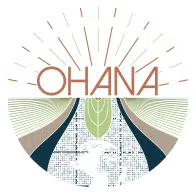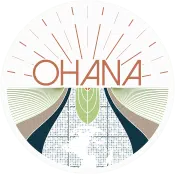
EU Sustainability News in 2022: A Full Recap and What’s Next
2022 will be remembered as a cornerstone year in terms of sustainability legislation for the European Union. The proposals published this year have clearly laid the grounds for major changes required from every stakeholder if we are to meet the commitments made in the European Green Deal.
For our last blog article of 2022, we will offer you a complete overview of the most critical pieces of legislation and policy updates published by the European Commission throughout the year, and comment on what we believe will be the most prominent public affairs subjects in 2023 when it comes to sustainability.
Want someone with deep experience and connections in the EU to help guide your sustainability strategy? Get in touch!
2022 EU Sustainability Legislation: The Year In Review
2022 saw the European Commission publish a number of proposals that collectively indicate the standards to which textile organisations will need to operate if they wish to become or remain a player in the EU market, come 2025.
While most sustainability proposals published in the past twelve months are set to impact any organisation interested in manufacturing or commercialising goods within the block’s borders, regardless of their sector, the textile industry was clearly a focal point for Brussels in 2022, as you will see from the list below.
It is also important to note that, with the exception of the Corporate Sustainability Reporting Directive, all the proposals mentioned still need to go through the legislative process, which means that the final legislation should only be available between 2023 and 2024.
EU Strategy for Sustainable and Circular Textiles
In a nutshell, the EU Strategy for Sustainable and Circular Textiles is a statement of what the European Commission expects the textile sector to look like by 2030. While the document contains a long list of initiatives to foster sustainable practices within the textile ecosystem, the institution’s action plan should culminate in the following scenario:
- Textile products within the EU will be long-lived and recyclable, mostly made of recycled fibres and free of hazardous substances;
- The production of textile products will follow social and environmental responsibility guidelines, with producers being responsible for their goods throughout the value chain, including when they become waste;
- High-quality affordable textiles will be widely available, along with profitable re-use and repair services, which will help expand the longevity of the products;
- The circular textiles ecosystem will be well established and growing through innovation, while incineration and landfilling of goods will be reduced to the minimum.
EU Textiles Ecosystem Transition Pathway
As one of the main initiatives included in the Strategy for Sustainable and Circular Textiles, the EU Textiles Ecosystem Transition Pathway deserves a special mention, due to its innovative nature. Best described as a cooperation tool, the Transition Pathway was designed as a platform to support discussions between the European Commission and industry stakeholders regarding the measures that will enable the digital and green transitions within the textile ecosystem.
Outlining possible scenarios for the transition pathway, the initiative features a Staff Working Document in which we can find what the Commission considers to be the sector’s more pressing challenges and suggestions on how to overcome them. We expect the final report, together with industry commitments, in Q1-Q2 2023.
Safe and Sustainable-by-design (SSbD) Framework
Expected to be finalised by May 2023, the Safe and Sustainable-by-design Framework or SSbD was developed by the EU Commission in order to accelerate the uptake of alternative and more intrinsically safe and sustainable chemical products and technologies across the EU. The document’s research and development guidelines involve a pre-market design approach consisting of two parts:
- A set of criteria to support the design of safe and sustainable solutions for the use of chemicals;
- A five-step assessment that assigns an SSbD score to a given substance, based on its safety and sustainability aspects.
The key message conveyed by the framework is that, while the use of chemicals may be required in certain industrial activities, their use should be minimised wherever possible, and overall safety and sustainability should be top of mind in these processes.
YOU MIGHT FIND THIS HELPFUL: EU Chemical Law is filled with complex jargon and terminology that you might not be familiar with. To help make things easier, we’ve prepared a comprehensive glossary of EU Chemical jargon.
EU Ban on Products Made with Forced Labour Proposal
Although many of the proposals coming from Brussels in 2022 address environmental concerns, the social aspect of sustainability was not forgotten. Sending a strong message to organisations from all sectors, the EU Ban on Forced Labour Products proposal is aimed at completely eliminating goods made with forced labour from the EU market, prohibiting the manufacturing of such products, as well as their importation and exportation.
Due to its impact on international supply chains, it is expected that the initiative will contribute to the eradication of forced labour both inside and outside of the EU.
EU Due Diligence Legislation Proposal
Similarly to the EU Ban on Forced Labour Products piece, the EU Due Diligence Legislation proposal’s impacts should be felt far beyond the Union’s borders. The Due Diligence proposal essentially expands the responsibility of European organisations when it comes to sustainability, making it mandatory for them to identify, prevent, mitigate, bring to an end and account for any actual or potential adverse effects within their own operations and that of its subsidiaries and value chains, regardless of location. This is a legally binding piece of legislation for large companies, but supporting measures to guide SMEs on the subject can also be found in the document.
Corporate Sustainability Reporting Directive
Adopted by the EU Parliament and Member States in November, the proposal for a Corporate Sustainability Reporting Directive (CSRD) reviews the Non-Financial Reporting Directive requirements, increasing the exchange of sustainability information between those operating in the corporate world. This initiative was included as a priority in the 2022 Work Programme, and the goal is to standardise sustainability reporting, so that financial institutions, investors, and the general public may access comparable and trustworthy sustainability data.
The scope of the proposal includes all companies listed on EU regulated markets, but also unlisted large companies. To be considered large, a company must exceed at least two of the following three criteria:
- Balance sheet total of 20 million euros;
- Net turnover of 40 million euros;
- Average number of 250 employees during the financial year.
Companies will be able to report at parent company level, and the implementation deadline for large non-listed companies is the 2025 financial year, whereas for small and medium-sized companies it will be the 2026 financial year.
Empowering Consumers Directive Proposal
Ahead of the Green Claims initiative, the Empowering Consumers Directive was developed to amend the earlier Consumer Rights and Unfair Commercial Practices (UCPD) policies. Among other significant changes, the directive mentions a total of ten new banned commercial practices related to product obsolescence and greenwashing, a set of additional information requirements regarding commercial guarantees, and introduces a product repairability score.
Ecodesign for Sustainable Products Regulation
The Ecodesign for Sustainable Products Regulation or ESPR has been designed to help guarantee that the majority of the products available on the EU market in the future have a reduced impact on the environment across their entire lifecycle. It is an expansion of the current Ecodesign Directive, aimed at significantly boosting its impact by widening the range of products covered and adding new sustainability requirements to be met.
With a few exceptions, such as food and feed products, nearly all physical goods available within the block may need to comply with requirements related to:
- The product’s durability, recyclability, reusability, upgradability and reparability, as well as its recycled content;
- Energy and resource use and efficiency of the product, based on a life cycle assessment;
- Carbon and environmental footprints, based on a life cycle assessment;
- The presence of substances of concern in the product which could limit its circularity;
- Information requirements to improve transparency, including via a Digital Product Passport.
Even though such requirements might seem challenging to meet, they should also result in positive changes for the businesses themselves.
Packaging and Packaging Waste Directive Revision
As part of the Circular Economy Action Plan, the European Commission has decided to conduct a revision of its Packaging and Packaging Waste Directive. The three core objectives included in the proposal would be: to reduce the current production of packaging waste; promote cost-effective circular economy principles across the industry, and increase the use of recycled materials in packaging. These efforts should support us in achieving a critical goal reiterated in the Circular Economy Action Plan, which is to make all packaging reusable or recyclable in an economically viable way by 2030, while also strengthening the EU’s internal market.
EU Certification of Carbon Removals Proposal
With the need to integrate the subject of carbon removal into EU climate policies in mind, a Certification of Carbon Removals proposal was developed and published in late November.
This innovative piece proposes a method for certifying carbon removals within the European Union, including rules for monitoring, reporting and verifying the authenticity of these removals. The implementation of this certification framework will make it possible to provide financial incentives and facilitate funding from private and public sources. European organisations will be encouraged and supported in promoting carbon removal from the atmosphere through nature-based and technological solutions, but compliance won’t be made a requirement for textile companies to operate.
What to Expect in 2023
2023 will also be a busy year in Brussels when it comes to sustainability, as the policy development process continues for the legislative proposals mentioned above. Both the Deforestation-free Products Regulation and the Waste Shipment Regulation proposals will be finalised in 2023. The new legislative proposal on unintended release of microplastics should be published already in Q1. The second and last quarter of the year should see the publishing of the Waste Framework Directive and REACH Regulation revisions. The most expected Substantiating Green Claims Directive is now foreseen in 2023.
Stakeholder consultations to gather inputs ahead of legislative proposals are also expected throughout 2023, namely for the revision of the EU Textile Labelling Regulation.
EU Textile Labelling Regulation
Among the proposals published in the last quarter of 2022, the EU Textile Labelling Regulation is actually a revision of the legislation which has already been in place since 2012. In addition to addressing some ‘outdated’ elements of the previous legislation, the new text steps into the digital era, exploring subjects like digital labelling, for example. The document also assesses how new materials’ names, such as “vegan leather”, should be regulated and if new rules on clothes sizing are required.
Waste Framework Directive Revision
The Waste Framework Directive is an essential document in supporting the EU’s environmental efforts since it establishes basic concepts related to waste management, such as the definitions of waste, recycling and recovery. It also includes the requirement for all member states to implement the separate collection of textile waste by 1st January 2025 and sets rules for the implementation of Extended Producer Responsibility (EPR) schemes. The revision of the Waste Framework Directive expands on many of these subjects, harmonising aspects of the EPR rules, determining how textile waste shall be separately collected in member states, and setting reuse and prepare for reuse targets for textile waste. It also determines EPR obligations related to textiles, making it mandatory for companies placing textile products in the EU market to pay EPR fees. We believe that its revision will have a strong focus on food and textile, and in searching for a common EPR approach.
EU Green Claims Directive Proposal
Initially expected at the end of 2022, the EU Green Claims Directive will be a set of complementary requirements aimed at solving the issue of greenwashing, which was identified as a common practice across all sectors of the Union’s market. In order to regulate and standardise the so-called ‘green claims’, the European Commission established that any environmental claim should be supported by evidence of outstanding sustainable practices throughout a company’s entire value chain, based on a life cycle assessment approach.
As 2022 draws to a close, we would like to wish everyone a lovely holiday season and a happy new year! With a new year come new challenges, and we at Ohana are, as always, available and excited to support you in developing the ideal public affairs strategies to leverage on these changes.
Want someone with deep experience and connections in the EU to help guide your sustainability strategy? Get in touch!
Join our newsletter to keep up to date with the latest news and information coming out of the EU.


